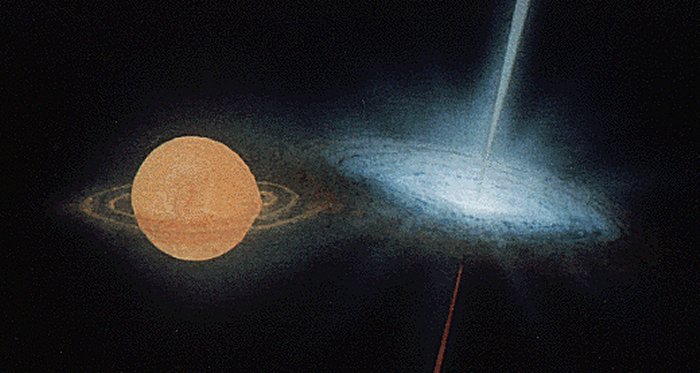MessageToEagle.com – For the first time, an international collaboration of scientists, including physicists from the University of Utah, has detected highly energetic light coming from the outermost regions of an unusual star system within our own galaxy.
The source is a microquasar—a black hole that gobbles up matter from a nearby companion star and blasts out powerful jets of material.

The team has studied one of the most well-known microquasars, named SS 433, which is about 15,000 light years away and their observations strongly suggest that electron acceleration and collisions at the ends of the microquasar’s jets produced the powerful gamma rays.
“There are a lot of microquasars in our Milky Way galaxy, but this is the first and only one that we have detected emitting very-high-energy gamma rays,” said Anushka Udara Abeysekara, research assistant professor in the Department of Physics & Astronomy at the University of Utah, in a press release.
“To understand the system in detail, we used multiple wavelengths of light, such as X-rays and radio-waves, to piece together the bigger picture.”
SS 433 is a micro-version of quasar, located inside our own galaxy. The system consists of an object, either a black hole or neutron star, sucking in matter from a single unstable star. The system sprays accelerated particles along the opposite sides of the system, creating two jets. The jets smash into the interstellar medium around the two objects and produce the high-energy gamma rays.

The team gathered data from the High-Altitude Water Cherenkov Gamma-Ray Observatory (HAWC),which is a detector designed to look at gamma ray emissions coming from astronomical objects such as pulsar wind nebula, supernova remnants and blazars.
HAWC, located roughly 13,500 feet above sea level near the Sierra Negra volcano in Mexico, is perfectly situated to catch the fast-moving rain of particles. The detector is composed of 300 tanks of water, each of which is about 24 feet in diameter, and collects data 24 hours a day, seven days a week
Researchers examined data taken over 1,017 days and saw evidence that gamma rays were coming from the ends of the microquasar’s jets, rather than the central part of the star system and concluded that electrons in the jets attain energies that are about 1,000 times higher than can be achieved using Earth-bound particle accelerators, such as the city-sized Large Hadron Collider.
The jet electrons collide with the low-energy microwave background radiation that permeates space, resulting in gamma ray emission.
“The two jets of SS 433 are the most powerful jets ever observed in our galaxy. That makes them a brighter gamma-ray source compared with other microquasars,” said Abeysekara.
“We need to keep observing the sky and increasing our sensitivity to find more microquasars similar to SS 433, if they exist, to improve our understanding of the jets.”
Research is published in the journal Nature.
MessageToEagle.com







